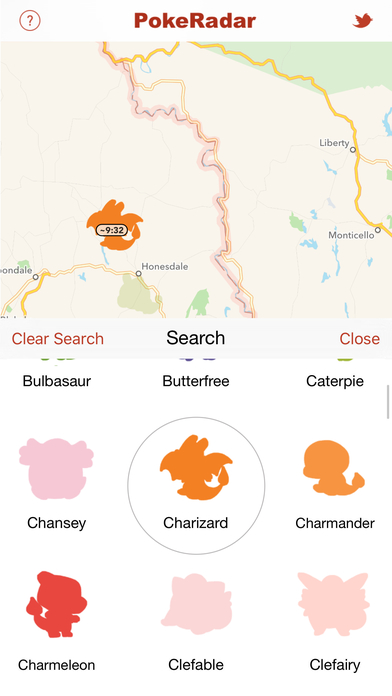
Jason Atherton may have the best job in the world.
“I’m like full-time Pokémon guy right now, which is super fun,” said Atherton, who recently graduated from the University of Washington’s Tacoma campus with an MBA.
Atherton is one of eight co-founders of PokeRadar, the Seattle-based Pokémon Go tracking app that has taken the world by storm and now ranks as the No. 6 paid app in Apple’s App Store.

The group has come together over the last month as PokeRadar grew from an idea to a global success, often donating time or working on the project on top of other full-time positions.
“It’s kind of this superstar group of developers,” Atherton said. “Most of us are here in Seattle, but lots of guys are traveling around and doing their full-time jobs.”
PokeRadar relies on user-reported data to predict where Pokémon will spawn, and for how long. Users can also filter the map to aid in their search for specific Pokémon — say you’re after an elusive Squirtle or Jynx or Charmander.
PokeRadar was born on the night of June 6, 2016. Like hundreds of other players, Braydon Batungbacal and Nick DiVona were roaming the streets of Seattle, hunting creatures.
Batungbacal, a Seattle entrepreneur and developer who co-founded Spreesy, and DiVona, an independent iOS developer, loved Pokémon Go. But they wanted more—a way to communicate with other users and share info on Pokémon sightings.
“Braydon sat down and just worked all night long, and he built the whole [app] in less than 24 hours,” Atherton said.
The next day, PokeRadar skyrocketed to second place in the iOS store, behind Pokémon Go itself. Since then the app’s popularity has dwindled slightly, but it remains the number one paid app in many countries.

Unlike its competitors, PokeRadar works by crowd-sourcing data from users, Atherton said. But as users skyrocketed, the developers scrambled to keep up.
“It was a map that was super busy, really populated,” Atherton said, adding that the app now also predicts locations based on past data. Batungbacal will be speaking about the app’s development and dramatic rise at Tuesday night’s New Tech Seattle meetup at Galvanize in Pioneer Square, and at New Tech Eastside’s meetup on August 16.
PokeRadar’s crowd-sourced foundation helped it escape last week’s crackdown by Pokémon Go makers Niantic, which shut down many popular third party Pokémon Go tracking applications
Atherton said these apps were plugging into Niantic’s Application Programming Interface (API), which involved creating fake accounts to get data, and that this strain on the system was overloading the Niantic servers.
“What they’re doing is actually illegal, and its unethical, and we had a conversation about if we should do that too,” he said.
But the team decided to stick with their original model just days before other third party apps were delivered cease-and-desist letters by Niantic.
Atherton said the group behind PokeRadar filed incorporation paperwork last week, and is considering several options moving forward, including an acquisition offer from a mobile app gaming company. It is also considering outside funding to grow the business in new ways.
In addition to Atherton, Batungbacal, and DiVona, the PokeRadar team includes Santiago Gonzalez-Garza, Mohammad Adib, Jonathan Luo , Bradley Snyder and Neil Sarkar.





